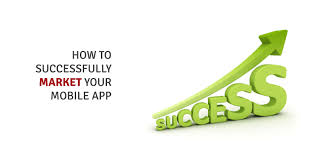imediaconnection.com

Back in June 2015, the number of apps available through Apple's App Store passed 1.5 million, and even more are available on Google Play. With so many apps competing for the same space on a user's phone, how can developers ensure that their offering takes the lead?
Differentiation based on features can be a big help, but an engaging marketing plan should be the cornerstone of any sales plan. Many software developers are too enamored of the technological marvels they've developed and want all the latest cool features to be the advertising focus. These might be great, but if consumers don't see how the latest gimmick betters their lives, they simply won't download your app.
Forget the scope of your tech -- focus on making it relatable and engaging. When it comes to connecting with an audience and developing brand loyalty, nothing beats a good story.
Finding personal stories
A compelling marketing story helps users to see your app in a different light, going above and beyond basic functionality. Lyft, the ride-hailing app, is great at this strategy. From the very beginning, Lyft has had a distinctive story to tell. And it's a simple one: just buddies giving each other rides.
Whether you're on the company's Facebook page, Twitter feed, or blog, this friendly and inviting atmosphere is clear. Take a recent Facebook post detailing one San Diego driver's story. He got a request to pick up a bunch of guys after a football game, and when he arrived he found that a Navy friend he hadn't seen in five years was among them.
There's also a post about how San Francisco Lyft drivers are helping homebound senior citizens, and another about how one driver is seeing the world with the money he earns driving for Lyft. Personal stories like these are very engaging, and they reinforce the brand's identity.
Plot-driven advertising
If you have access to great personal stories like Lyft's, then you'd be a fool not to use them, but there are other options if you don't.
For Valentine's Day, Fitbit ran a spot in which an average Joe leaves his house and spots the girl of his dreams jogging down his street. He's not fit enough to catch up with her, and so he gets a Fitbit and starts working, getting closer and closer to her until she finally one-ups him by ascending a long flight of stairs. The tagline "Know Your Heart" flashes up on the screen.
Not only has Fitbit told a great story, but it also expresses the benefits of the product in a real-world scenario.
Crafting the perfect tale
How can you get the most out of plot-driven advertising? Here are four tips to get you started:
1. Show, don't tellInstead of focusing on your tech, concentrate on how it's used. One app that does this well is Operator, a shopping tool that connects users directly to real-life shopping agents who can help them find the right item.
The company's website doesn't tell users how its impressive technology would make their lives easier. Instead, it shows engaging, colorful photos of people and products, each tagged with details of the product and how it can improve the user's life. These pictures show a clear picture of what the product offers.
Trust your target audience to see the benefits in what you're showing them. An exhaustive list of features pales in comparison to a compelling visual display.
2. Construct a beginning, middle, and endThe arc is one of the fundamentals of storytelling, and the best ads employ this structure. The Fitbit ad is a perfect example. The man sees the woman (beginning), starts training (middle), and then catches up (end).
If your story doesn't include these three essential components, then it's not worth telling.
3. Find the characterThe best ads have character, and this character comes from the people involved. They could be the writers behind your ad, or they could be your users. Lyft's ads are so successful and so poignant because they take real-life stories and share them with the world.
More than 16 million people like the Humans of New York Facebook page. We love to hear heartwarming stories about people's lives. Find this personality in your brand, and you'll keep that same engagement will find its way to your app.
4. Always leave them wanting moreOnce you've found the right approach, don't give everything away in one go. Continuous storytelling is perfect for creating and maintaining brand engagement.
One of the best examples of this approach comes from the U.K. telecommunications giant BT Group, which ran 40 ads over six years following a family's struggles and joys. In the later years, the company even took to social media to ask users how a cliffhanging ad should be resolved. The winning outcome received more than 1.6 million votes.
Not many apps are using through lines in their marketing today, but it's a proven way to keep people engaged and ensure they come back for more.
A genuine brand isn't generated after the fact. It's built upon the reasoning behind the app's purpose, and that can be found in the human dimension. Find the right story to tell, and you'll have the basis for a strong narrative campaign that will resonate with audiences, leading to strong sales for your app.
No comments:
Post a Comment